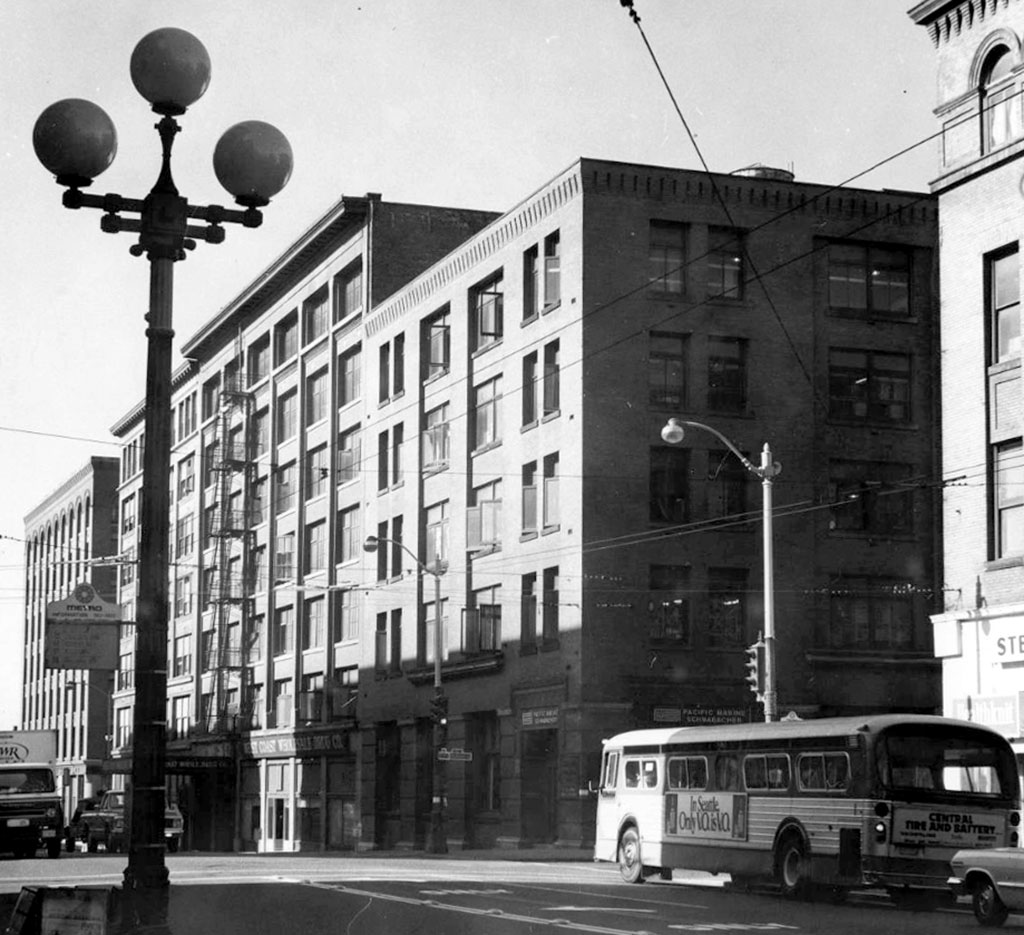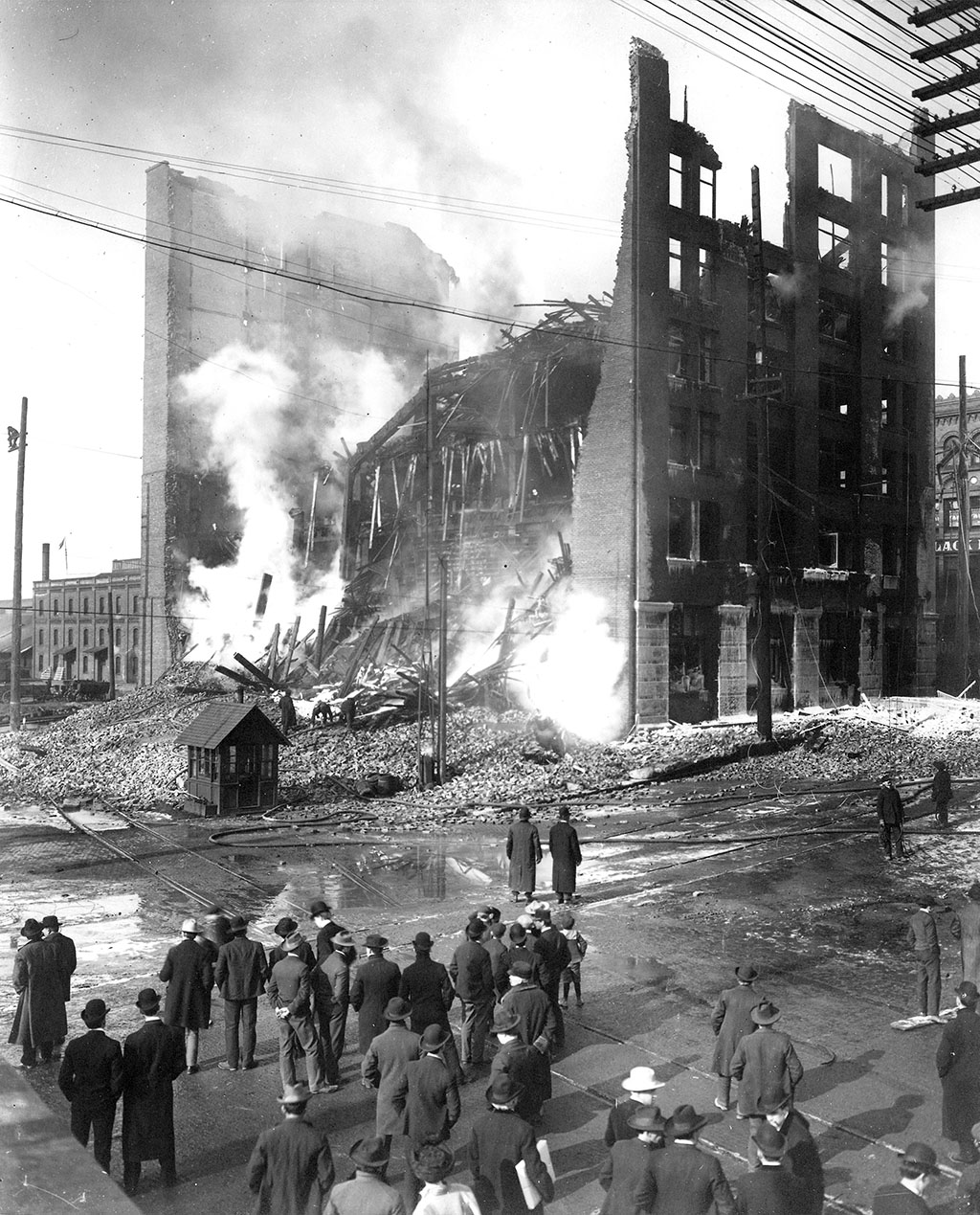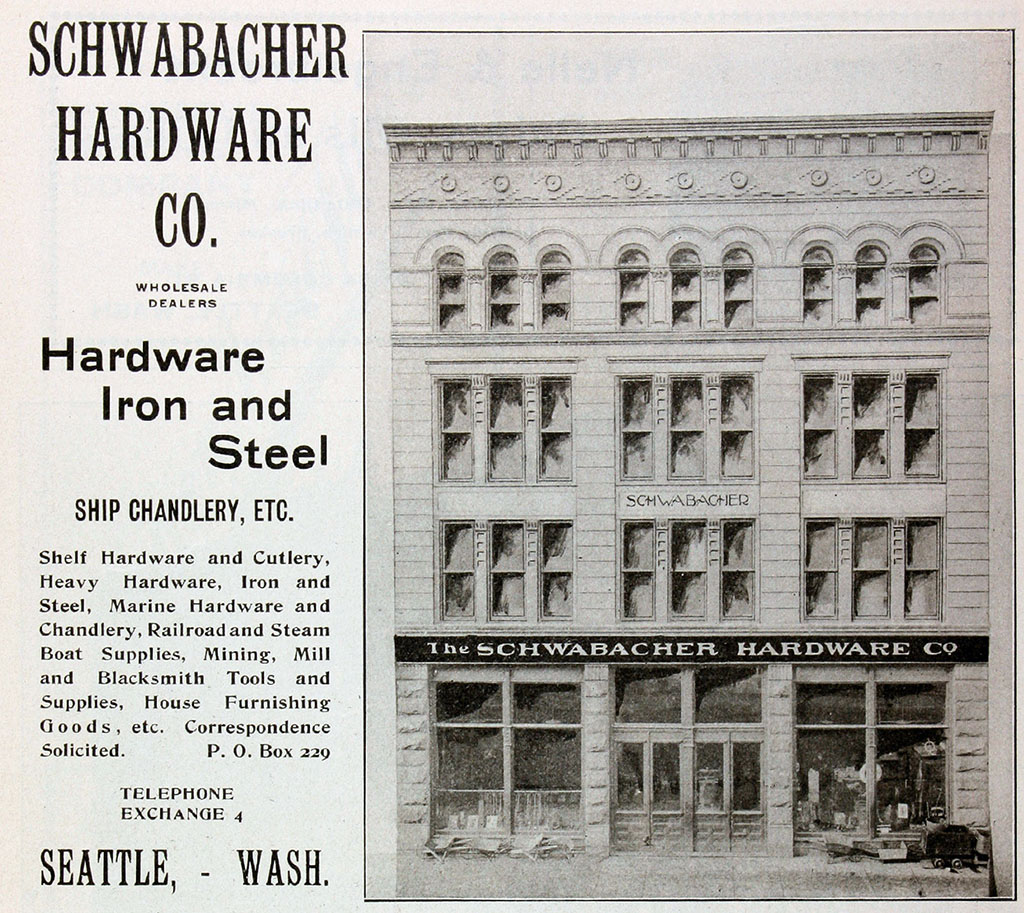-
Schwabacher Building
401 1st Avenue S
401 1st Avenue S
Many photos of the post-Gold Rush growth in Seattle feature two businesses linked by religion, specifically by their Jewish owners. Perhaps the best known was Cooper & Levy, a retail and mail-order grocery, hardware, and woodenware business, started in 1892 by Isaac Cooper and Louis Levy, three blocks north at 104-106 1st Avenue S. Open 24 hours a day, the store sold everything needed for “One Man for One Year” in the Klondike, as its advertisements read. They eventually sold the store to the Bon Marche, another Seattle institution.
Also well known were the Schwabacher family, who had immigrated in 1860 to Walla Walla, then the largest town in the territory, before establishing the Seattle branch of the family’s wholesale grocery and hardware company in 1869. Their first manager was Bailey Gatzert, succeeded by Nathan Eckstein; both men had married into the Schwabacher family. They had several properties, including one at 1st and Yesler (their original location) and this location, their hardware business and annex, built between 1903 and 1905.
The Schwbachers, Gatzert, Cooper, and Levy were the more typical Jewish immigrants in this era to America—Eastern Europeans. In contrast was a later wave, which consisted of Sephardic Jews: Turkish, Greek, and those from the island of Rhodes who were descendants of Spanish Jews exiled in 1492. Instead of speaking German or Yiddish, Sephardim spoke Ladino, or Judeo-Spanish. Solomon Calvo and Jacob Policar were the first of this group to arrive, in June 1902. Dora Levy, who spoke Yiddish, Spanish, Turkish, and English, was the first Sephardic woman to immigrate to Seattle. Many Sephardim ended up working in the fish and produce trade, though Sam Israel (from Rhodes) focused instead on buying real estate and ultimately owned 14 properties in Pioneer Square, including the Schwabacher Building and the Northern Hotel.
Walk one block south on 1st Avenue S, turn right, and continue west to Alaskan Way. Cross Alaskan to a small concrete building and an historical marker.




